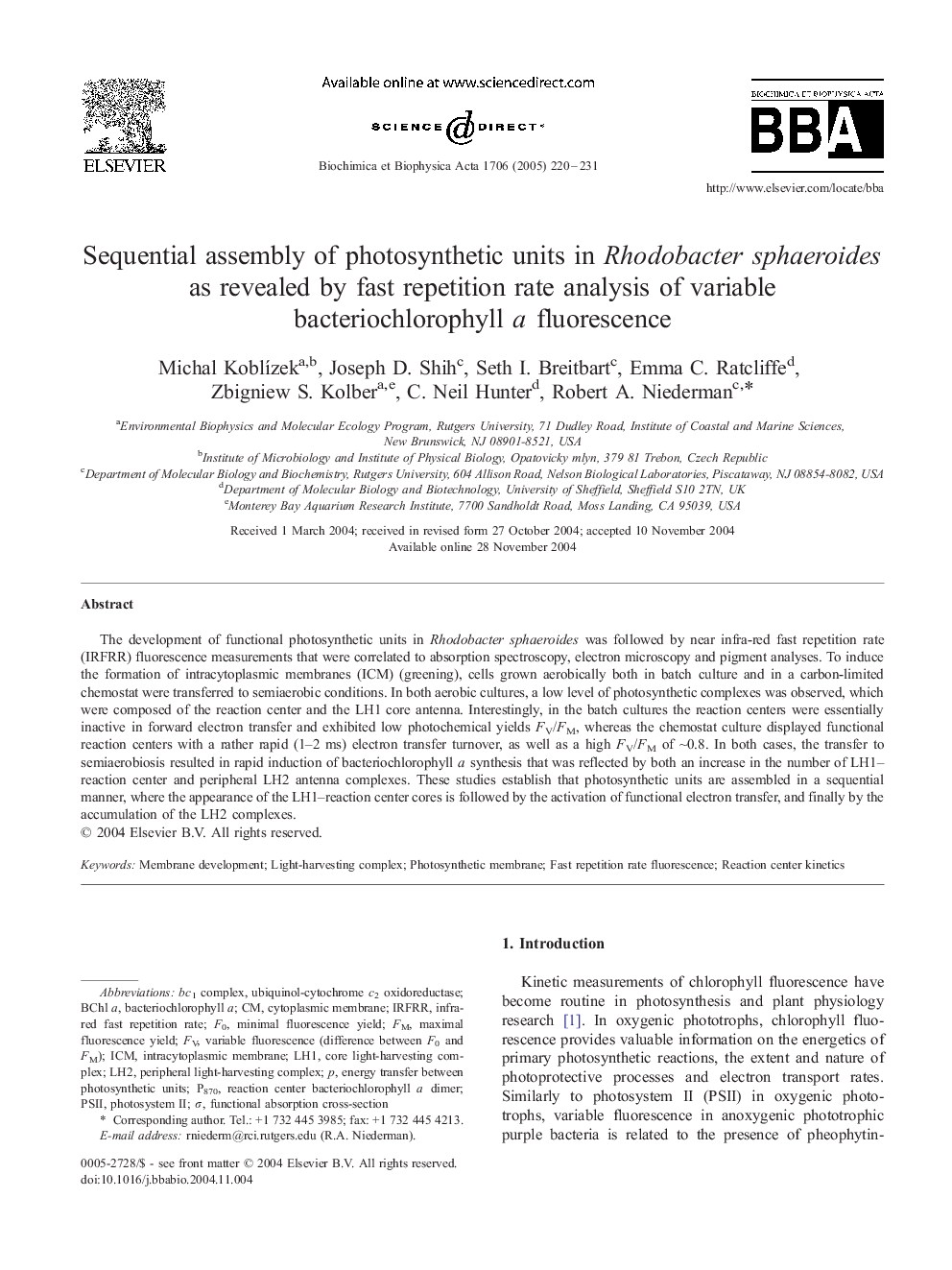| Article ID | Journal | Published Year | Pages | File Type |
|---|---|---|---|---|
| 10796151 | Biochimica et Biophysica Acta (BBA) - Bioenergetics | 2005 | 12 Pages |
Abstract
The development of functional photosynthetic units in Rhodobacter sphaeroides was followed by near infra-red fast repetition rate (IRFRR) fluorescence measurements that were correlated to absorption spectroscopy, electron microscopy and pigment analyses. To induce the formation of intracytoplasmic membranes (ICM) (greening), cells grown aerobically both in batch culture and in a carbon-limited chemostat were transferred to semiaerobic conditions. In both aerobic cultures, a low level of photosynthetic complexes was observed, which were composed of the reaction center and the LH1 core antenna. Interestingly, in the batch cultures the reaction centers were essentially inactive in forward electron transfer and exhibited low photochemical yields FV/FM, whereas the chemostat culture displayed functional reaction centers with a rather rapid (1-2 ms) electron transfer turnover, as well as a high FV/FM of â¼0.8. In both cases, the transfer to semiaerobiosis resulted in rapid induction of bacteriochlorophyll a synthesis that was reflected by both an increase in the number of LH1-reaction center and peripheral LH2 antenna complexes. These studies establish that photosynthetic units are assembled in a sequential manner, where the appearance of the LH1-reaction center cores is followed by the activation of functional electron transfer, and finally by the accumulation of the LH2 complexes.
Keywords
Related Topics
Life Sciences
Agricultural and Biological Sciences
Plant Science
Authors
Michal KoblÃzek, Joseph D. Shih, Seth I. Breitbart, Emma C. Ratcliffe, Zbigniew S. Kolber, C. Neil Hunter, Robert A. Niederman,
